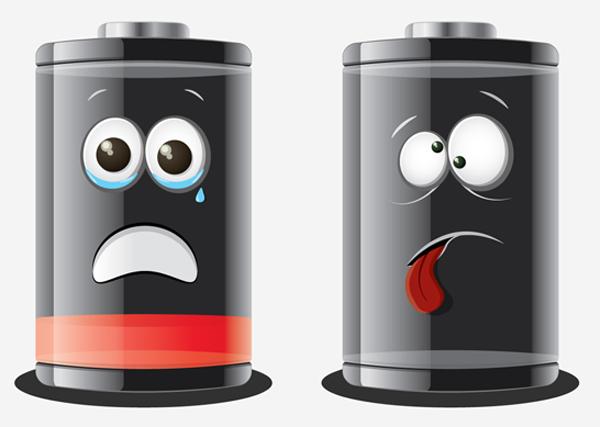You are here
Scents across networks, prescription monitors and other innovations
By Jean-Claude Elias - Aug 07,2014 - Last updated at Aug 07,2014
No matter how high-tech the world we’re living in already is, it seems like we are always looking for more, for science fiction ideas to become reality. Short of achieving teleportation nothing would surprise us anymore.
Sending scents across networks as easily as sending text and multimedia messages, computer screens that free you from prescription glasses, rechargeable batteries that are at least four times more efficient than they are now, and globally available wireless charging of mobiles devices, these are a few of the innovations that we can, very reasonably, expect to see and use sooner that we think.
Forget about the “i” and the “e” prefixes that we have become accustomed to in most technology neologisms, here comes the “o”. Vapor Communications is working on the oPhone, a device that can “transmit” odours (hence the “o”). It will be the “first scent-based mobile messaging platform for iPhone users worldwide”.
For now it is limited to owners of iPhones. It will require the addition of the oPhone device and of course the software application that goes with it. Inventors David Edwards and Rachel Field (Wyss Institute, Harvard University) say they will make a version for the Android system later. From a starting set of 32 basic scents the system can transmit, actually recreate, a combination of 300,000 scents.
From the warm and salty air of a Mediterranean beach to the evocative aroma of cookies out of the oven, you will be able to add significant impact to your photos or messages, thus enhancing the emotional aspect of the communication.
To prove that this is not just an idea in the lab, a commercial release date and a price tag have been announced: sometime in 2015 and at $150. Get ready for the most sophisticated, upcoming “nose job”.
Researchers want to be kind not only to your nose but to your eyes as well, at least if you wear prescription eyeglasses. An average 62 per cent of the world population wear glasses or contact lenses (CBS — Statistics Netherlands Institute). For them a futuristic monitor technology is being developed jointly by the Massachusetts Institute of Technology, the University of California at Berkeley and Microsoft.
The concept consists of having your vision corrected by the screen you are looking at, not by your glasses, therefore freeing you from having to wear glasses when working at the computer monitor or at any other mobile device screen for that matter. It would come as a dream especially that we all tend to spend hours looking at various screens every day. Being able to do so without wearing glasses would bring unprecedented comfort.
It’s like passing on your ophthalmologist’s prescription to the screen. It is certainly one of the smartest, most useful ideas in the last 10 years or so, though the actual wide scale implementation may take a while. It also prompts a few questions. How will it practically work since in most cases, and for one given person, each eye requires different corrections? What will happen if two people want to look at the same computer monitor at the same time? Wait and see (no pun intended).
Rechargeable batteries are still at the heart of mobile devices. When on battery, and in the typical case, a laptop will run for three to five hours, a tablet for 8 to 10, and a smartphone for 14 to 20. With the ever increasing usage this has proved to be hardly enough. Add to it the hassle to fetch and to connect a charger, to remain tethered to the charging outlet and to wait till charging is done and you reach the unacceptable frustration point.
Despite some improvements in the last five to six years with batteries lasting a bit longer and connectors being more or less standardised by the industry, we are still far from what users have the right to expect and actually need.
Two innovations may bring more than just a mild pain relief. Researchers at Stanford University are working on a prototype of pure lithium anode (one of the two poles or terminals of a battery). If the prototype succeeds the industry will be able to manufacture batteries that will be at least four times more efficient than what is available today. Imagine running your laptop 24 hours on battery!
At the same time work on global wireless recharging of devices is being seriously pushed forward by WiTricity Corp. (wireless electricity). Marin Soljacic, one of the founders of the startup company, declares: “It’s probably a dream of any professor at MIT to help change the world for a better place.”
Global wireless charging would let you recharge your mobile device as easily as you would connect to an available wifi hot spot today. Just being anywhere near it will do. At one point in the future wireless charging will serve not only mobile computing devices and smartphone but electric cars as well.
The combination of longer lasting batteries and wireless charging will constitute nothing less than a new revolution in the realm of mobile computing and communications.
Related Articles
Google on Tuesday gave early adopters of its Internet-connected eyewear a bit of advice: don’t be “Glassholes”.
LAS VEGAS — It’s enough to make you want to drop everything and race for the nearest power outlet: Your workday isn’t even done, and your sm
A powerful laptop, a new tablet, a high-end smartphone? Maybe, but there are high-tech gifts that are less expensive and that are also guaranteed to please.

















